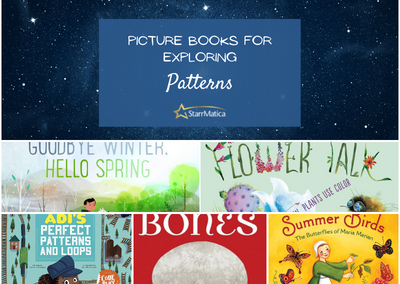Picture books are a great way to get students to examine the crosscutting concepts of the Next Generation Science Standards. New to the crosscutting concepts? Here’s a quick summary! The crosscutting concepts are one of the three dimensions of the NGSS. The seven crosscutting concepts are lenses through which your students can examine different phenomena. Using the CCC helps students to better understand both known and unfamiliar phenomena, so it can be worthwhile to spend some time helping them to dig in and really understand what each concept means. Using picture books can help make the CCC accessible to students of all ages!
The picture books shared below are fantastic for examining the crosscutting concept of Patterns. Patterns are repeats. There are different types of patterns. For example, we know the patterns of objects and that is what allows us to identify objects. We know a tree is a tree because it has a trunk, branches, and leaves. We can use patterns to classify, predict, and question phenomena.
Whether you are reading the following picture books aloud, having students explore them in small groups, or having students read them independently, the following questions can be used to help students focus on patterns:
- How is this different than ____?
- How is this the same as _____?
- What do you think will happen next? Why?
- Is this a pattern? Why?
- How are these events related?
- How often does this happen?
- Can you describe the pattern?
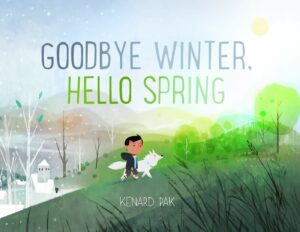 Goodbye Winter, Hello Spring by Kenard Pak is one in a series of four beautifully illustrated seasonal books. Seasons are a familiar pattern to many students, and for those who live in climates where there aren’t large seasonal changes, picture books can be an excellent way to introduce seasonal patterns from other places around the world. For this series of texts, you could read one each season or read them in succession and ask your students to reflect on the patterns they notice in each season.
Goodbye Winter, Hello Spring by Kenard Pak is one in a series of four beautifully illustrated seasonal books. Seasons are a familiar pattern to many students, and for those who live in climates where there aren’t large seasonal changes, picture books can be an excellent way to introduce seasonal patterns from other places around the world. For this series of texts, you could read one each season or read them in succession and ask your students to reflect on the patterns they notice in each season.
Questions to Discuss: How do patterns help us to know what season of the year it is? Are seasonal changes predictable? Why?
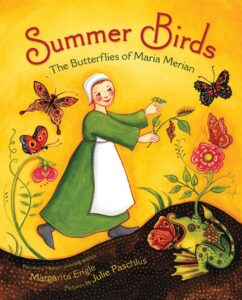 Back in the Dark Ages, no one knew where butterflies came from. Some people thought they just appeared out of the mud. Summer Birds: The Butterflies of Maria Merian by Margarita Engle is a biography of a citizen scientist whose careful scientific study and detailed drawings of caterpillars led to the discovery of metamorphosis. This is an excellent text to stimulate discussion of life cycle patterns.
Back in the Dark Ages, no one knew where butterflies came from. Some people thought they just appeared out of the mud. Summer Birds: The Butterflies of Maria Merian by Margarita Engle is a biography of a citizen scientist whose careful scientific study and detailed drawings of caterpillars led to the discovery of metamorphosis. This is an excellent text to stimulate discussion of life cycle patterns.
Questions to Discuss: What patterns did Maria observe? What cause and effect relationship did those patterns help her to discover?
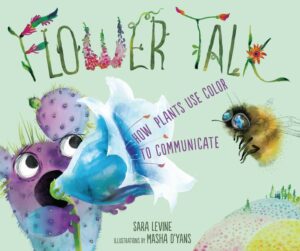 Flower Talk: How Plants Use Color to Communicate by Sara Levine describes how different plants use color to “speak” to different pollinators with engaging text narrated by a cactus. There are multiple ways to talk about patterns using this text from the patterns of behavior of pollinators, to the patterns of color flowers “use” to attract specific pollinators, to the pattern of what makes a flower a flower.
Flower Talk: How Plants Use Color to Communicate by Sara Levine describes how different plants use color to “speak” to different pollinators with engaging text narrated by a cactus. There are multiple ways to talk about patterns using this text from the patterns of behavior of pollinators, to the patterns of color flowers “use” to attract specific pollinators, to the pattern of what makes a flower a flower.
Questions to Discuss: Look at the illustrations in the text. What patterns do you notice that help you to identify a flower as a flower? How is color a pattern as described in this text? Are the behaviors of pollinators a pattern? Why or why not?
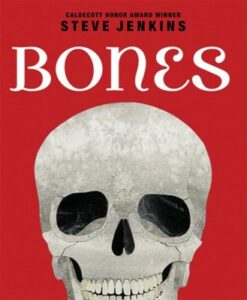 Bones by Steve Jenkins is a visually stunning text in which skeletons in the animal world are compared through detailed illustrations so readers can discover their striking similarities and differences. The patterns for students to discover in skeletons are are nearly endless. Thinking about structure and function alongside patterns would be a wise idea with this text. For example: What pattern do you notice in the structure of leg bones? What function does that structure allow animals to perform? Why are finger bones smaller and shorter than leg bones? How does that pattern relate to their function?
Bones by Steve Jenkins is a visually stunning text in which skeletons in the animal world are compared through detailed illustrations so readers can discover their striking similarities and differences. The patterns for students to discover in skeletons are are nearly endless. Thinking about structure and function alongside patterns would be a wise idea with this text. For example: What pattern do you notice in the structure of leg bones? What function does that structure allow animals to perform? Why are finger bones smaller and shorter than leg bones? How does that pattern relate to their function?
Question to Discuss: What patterns do you notice in the skeletons shared in the book that could help you to predict what the skeleton might look like for an animal you have only seen in a photograph?
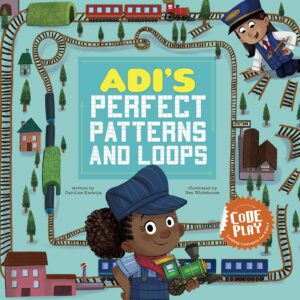 This text brings patterns out of the natural world we explored in the first few picture books and brings it into the realm of coding. In Adi’s Perfect Patterns and Loops by Caroline Karanja, Adi and Gabi teach the basics of coding by playing with trains. As the title suggests, coding patterns and loops are the focus of this particular text which is part of a larger series. Not only can you discuss the patterns described in the text, but you can also discuss why patterns are helpful in real life in coding and engineering.
This text brings patterns out of the natural world we explored in the first few picture books and brings it into the realm of coding. In Adi’s Perfect Patterns and Loops by Caroline Karanja, Adi and Gabi teach the basics of coding by playing with trains. As the title suggests, coding patterns and loops are the focus of this particular text which is part of a larger series. Not only can you discuss the patterns described in the text, but you can also discuss why patterns are helpful in real life in coding and engineering.
If you are a StarrMatica Texts: Science Your Way subscriber, you can check out the texts below that align with an exploration of patterns. Remember, each 1st – 5th grade text has multiple reading levels so all of your students can read the same content independently.
- Kindergarten: The Different Seasons; The Four Seasons; Bundle Up! Here Comes the Storm
- First grade: Day and Night; Hello Sunshine; Rising and Setting; Seeing Daylight; Follow That Bird; Follow the Leader; Animals and Their Young; Penguin Parents; Alike but Different; Born This Way; What is a Sound Wave; Listen Up
- Second grade: All About Islands; Island to Island; Making a Map; How Would You Sort It?
- Third grade: Can You Predict the Weather?; All Kinds of Climates; Climates Around the World; The Amazing Life Cycle of Animals; Passing Traits
- Fourth grade: Patterns on Earth; Creating Transverse Waves; Digital Patterns; Sending Messages Across the Ages
- Fifth grade: Shadows and Time; Keeping Track of Your Shadow; Traveling Through the Water Cycle; What Is the Water Cycle; Weather and the World; The Many Different Properties of Materials
Not a subscriber? Click here for a free trial to access the texts above.
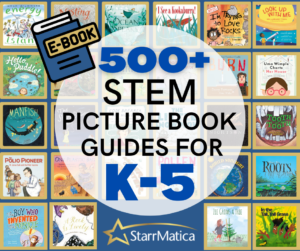 And if you are looking for additional picture books for your science classroom, check out the Perfect Picture Book Pairing Series that includes one-page guides with activities and discussion questions for hundreds of STEM-themed picture books aligned to every NGSS performance expectation!
And if you are looking for additional picture books for your science classroom, check out the Perfect Picture Book Pairing Series that includes one-page guides with activities and discussion questions for hundreds of STEM-themed picture books aligned to every NGSS performance expectation!
CLICK HERE TO PREVIEW THE PERFECT PICTURE BOOK PAIRING EBOOKS
Be sure to check out the other posts in this series to discover picture books to highlight each of the seven crosscutting concepts in the NGSS!
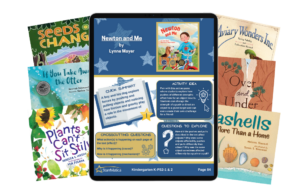
Want to save even more time with lesson ideas for 35 picture books that you can use to highlight all seven crosscutting concepts?
Enter your information below to receive your complimentary picture book guides including activity ideas, science questions, and crosscutting concept questions!

